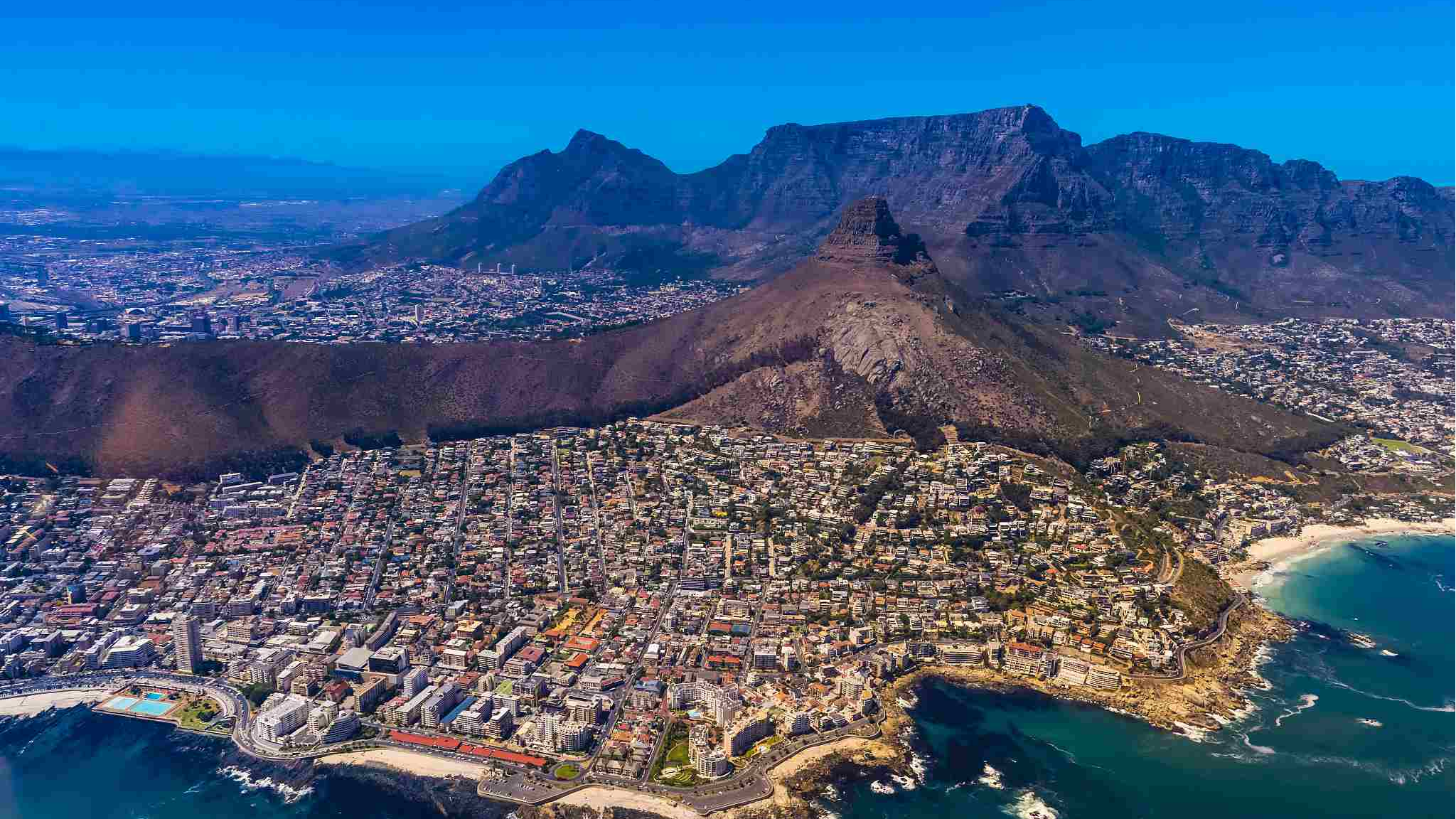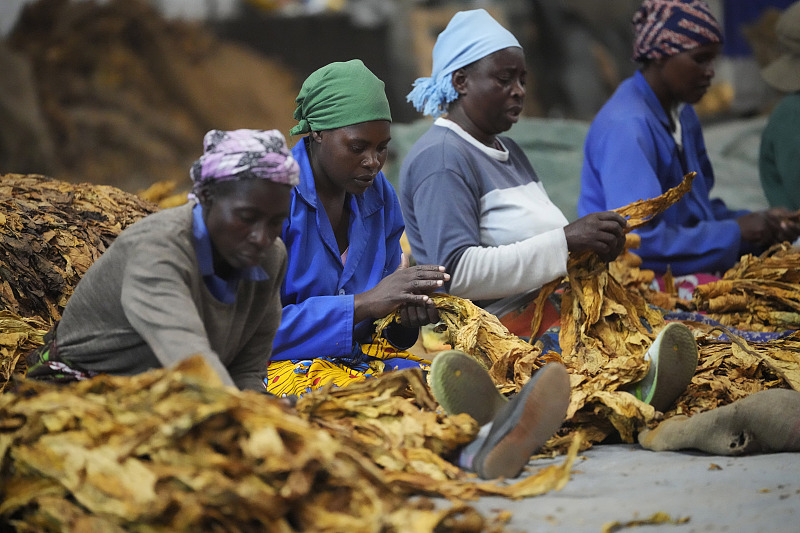
An aerial view of Signal Hill in Cape Town, South Africa. /VCG
An aerial view of Signal Hill in Cape Town, South Africa. /VCG
Editor's note: Célestin Monga is a former managing director at the United Nations Industrial Development Organization and a former vice president and chief economist at the African Development Bank Group, is Adjunct Professor of Public Policy at Harvard Kennedy School. The article reflects the author's opinions and not necessarily the views of CGTN.
Across Africa, macroeconomic management has improved substantially in recent years. Studies by the International Monetary Fund, African Development Bank (AfDB), and World Bank, as well as surveys from Worldwide Governance Indicators and Transparency International, all attest to this trend. Yet concerns about debt sustainability on the continent have been mounting, especially since the onset of the COVID-19 pandemic.
Such concerns are nothing new. By the 1980s and 1990s, African countries had amassed debt largely by borrowing from official creditors, such as development banks, OECD export credit agencies, and Paris Club lenders (major creditor countries). This set them apart from Latin American countries, which had borrowed heavily from private lenders. Still, rising debt-sustainability concerns led to a wave of debt-relief programs from the late 1990s through the 2000s.
In 1996, the IMF and World Bank launched the Heavily Indebted Poor Countries (HIPC) Initiative, which was followed three years later by the Enhanced HIPC Initiative. Both were major innovations in development finance that allowed for debts to multilateral creditors to get canceled. Then came the 2006 Multilateral Debt Relief Initiative and rescheduling of sovereign debts through the Paris Club, which sparked optimism about the future of Africa's debt burdens. Official creditors had extended more than $100 billion in relief to more than 40 countries – approximately 85 percent of them in Africa.
More recently, the G20 established the Debt Service Suspension Initiative (in May 2020) and then the Common Framework for Debt Treatments (in November 2020) to help indebted countries deal with the fallout from the COVID-19 pandemic. Under these programs, all G20 and Paris Club creditors had agreed to coordinate debt relief on a case-by-case basis to countries that applied for it.
The results, however, have been disappointing. Very few governments have applied for relief, fearing that the stigma would lock them out of global credit markets in the future. Yet, tightening global financial and monetary conditions have only made matters worse, especially for countries with U.S. dollar-denominated debts. The United Nations Development Program warns that 52 low- and middle-income countries are facing debt distress or at risk of it – and many of these are in Africa.
The Anatomy of African Economies
Debates over sovereign debt often link indebtedness with poor governance or gross incompetence, as if debt is something shameful that any "good" government would seek to avoid. And yet, as Barry Eichengreen and his co-authors argue in their book In Defense of Public Debt, "governments' ability to issue debt has played a critical role in addressing national emergencies – from wars and pandemics to economic and financial crises, as well as in funding essential public goods and services such as transportation, education, and healthcare." More fundamentally, "the capacity to issue debt has been integral to both state building and state survival. Public debt securities have contributed to the development of private financial markets and, through this channel, to modern economic growth."
While excessive spending and misuse of public funds have been a problem in some African countries, the financial fragility found on the continent is mainly the result of balance-of-payments deficits caused by external factors. For example, recessions in the few advanced economies that import goods from African countries tend to have an outsize impact on the latter cohort's fiscal position. These African economies are reliant on the export of one or two primary commodities, and they have struggled to diversify their trade partners.
Higher global energy prices also cut deeply into African public finances – including even in the major oil-producing countries, owing to their lack of refining capacity. Similarly, African countries are acutely vulnerable to commodity-price swings, dollar exchange-rate fluctuations, and rising interest rates in major economies (which can limit their access to financial markets). All such factors are well beyond African governments' control.
These problems are compounded by the continent's rapid population growth, which is increasing demand for public services. Moreover, African countries have large infrastructure gaps. The AfDB estimates that the continent's infrastructure needs amount to $130-$170 billion per year, with a financing gap in the range of $68-$108 billion.
Accordingly, Africa has a good reason for its large external debt: It needs such financing to pay for major investments in infrastructure (energy, water, telecommunications, and road networks) and human capital (health care and education) required by the continent's rapid demographic growth. Increases in public and external debt can be justified, especially if they go toward investments that will increase potential growth and attract more foreign direct investment (FDI).

Women sort tobacco at a farm on the outskirts of Harare, Zimbabwe, April, 9, 2022. /CFP
Women sort tobacco at a farm on the outskirts of Harare, Zimbabwe, April, 9, 2022. /CFP
A Better Way
The many debt-relief schemes implemented since 1996 have failed because they have all been based on a flawed framework for debt-sustainability analysis in Africa. The traditional DSA is a simplistic accounting tool that focuses solely on a country's financing needs and its ability to repay – or what is misleadingly known as a country's overall "balance sheet." The problem with this approach is that it over-emphasizes external assets and liabilities that encompass both the public and private sectors.
Abiding by this definition of an overall balance sheet, the IMF and World Bank have long focused on debt-related liabilities (as opposed to equity) and reserves. Their justification is that a country's external debt and reserves have a significant impact on its ability to discharge external obligations – which may result from a problem of either solvency or liquidity – and will determine its overall debt vulnerability.
But a better approach is to move beyond a narrow, rigid understanding of debt sustainability to get a fuller picture of the determinants of indebtedness and debt-servicing capacity on the continent – especially in natural resource-rich countries. If solvency is defined as a country's ability to meet the present value of its external obligations, a broader view of public wealth should be considered, in addition to granular assessments of public-sector balance sheets. This would allow for a comprehensive evaluation of what the state owns and owes, thus offering a broader and more accurate fiscal picture beyond debt and deficits.
Once governments understand the size and nature of public assets, they can start managing them more effectively, with the potential to raise considerable additional revenue. A deeper analysis of public-sector balance sheets also would allow for better risk management and policymaking. The IMF's Fiscal Monitor already provides governments with the tools to analyze the resilience of public finances. By identifying risks within the balance sheet, they can take steps to manage or mitigate them early, rather than dealing with the consequences after the fact.
Copyright: Project Syndicate, 2023
(If you want to contribute and have specific expertise, please contact us at opinions@cgtn.com. Follow @thouse_opinions on Twitter to discover the latest commentaries on CGTN Opinion Section.)